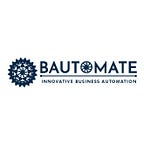Innovation is a necessary prerequisite of growth for all manner of businesses and industries. That being stated, it is quite difficult to innovate continually over a long period of time. That is where the business process management of BPM can step up to the plate and make innovation one of the integral features of a company’s business strategy. Innovation has to do with the act of introducing a novel concept to the market and monetizing it. Now innovation can be about the business model itself or about technology. Under the former one can look at new value propositions in terms of the supply chain or a new marketing segment. The technological aspect is really about fostering a technological environment that makes it possible to model, test, execute and manage business processes. Let’s look at the second aspect in some detail here.
Merging of RPA with BPM
The new kid on the block RPA (Robotic Processes Automation) can help enhance a BPM strategy to resolve a whole set of problems. While business process management has been known for quite some, RPA is gaining in reputation. It is essentially quite similar to BPM, in that it enables businesses to improve the way in which they function
RPA encompasses software bots that help automate tasks that are essentially carried out by computers. These include things like data extraction and data transfer. You need to both bring into existence and manage those bots, so as to achieve the desired objectives. Businesses across the board seek to improve processes and these days the best way of doing that is by way automating processes. This is where the RPA and BPM Integration is proving to be extremely fruitful. One can see this happening across industries and functions like insurance claim handling, HR processing, and order processing.
BPM is all about improving processes, but cannot automate those in isolation. It needs to use RPA to do so. Though RPA’s main function is to automate processes, it cannot do so in isolation. There has to be a corresponding process that can help optimize. Organizations are known to leverage BPM to bring reliable workflows that digitally connect stand-alone systems, data, and people in a reliable manner. RPA software functions inside these workflows to carry out precise rules-based automation functions.
Ways of making BPM and RPA Software work together
BPM Can Lead the Way in Identifying Prime Processes to be Optimised With Robotic Processes Outsourcing software
BPM’s principal function is to gather a better understanding of the processes that comprise a business or organization’s everyday operations. In other words, BPM helps manage processes that are hidden from plain sight but suffer from a lack of longtime oversight and management. What follows from this is the fact that any attempt to automate processes that you don’t fully comprehend are doomed to fail. That is where BPM can step up to the plate and become the basis for the implementation of RPA software. For any system to succeed the necessary prerequisite has to be well articulated and documented processes amenable to continuous improvement. BPM helps identify parts of an organization’s workflows and processes that are best suited to automation and there is no comparable solution that can be offered as an alternative to that.
BPA and RPA Can Help Join Legacy Systems with Modern Systems
BPM largely uses complex and outdated legacy systems that are expected to perform crucial business functions that require frequent human intervention and oversight. RPA helps effortlessly integrate the complex and disparate systems, so as to automate repetitive and labour intensive tasks pertaining to things like the extraction, transfer, and processing of data. That helps save a huge amount of time as well as effort, even as it helps reduce errors and enhance data quality. BPA and RPA can be used in tandem to modernize legacy IT as well as business operations in a large number of industries. These include the all-important banking and finance sectors.
RPA Can Be Deployed By Non Developers
As BPM and IT increasingly overlap and organizations turn to skilled experts when it comes to implementing an automation strategy, RPA can help achieve that without undue reliance on IT professionals. That is because quite a few RPA tools are created in a manner that even non-technical staff can use them. As RPA bots can be used by such staff, the overburdened and harried IT staff of an organization is free to focus on their core functions. That makes RPA just right for the kind of organizations that are interested in implementing integrations and automation solutions on a priority basis as a means of dealing with business challenges.
Conclusion
When it comes to using innovative methodologies in BPM, there is nothing that stands out as starkly as robotic process automation does. Going forward one can expect many more businesses from across industries to deploy it. The fact that it is easy to implement and manage makes it all the more popular as a means of responding to diverse business challenges.
